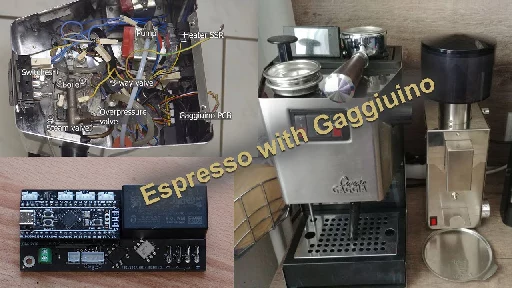
YouTube Video
Click to view this content.
Around 100w usually for:
- ccr2004
- crs309
- old epyc 7601 server (about 60w, 8 HDDs with spindown, 5 ssds and a mcx311 10G)
- homeassistant raspi separate from the main server
- poe switch for phone and ap.
All connected to a UPS so measuring is easy and power usage is constant. I would prefer lower as power cost is very high but there is not really anything significant to save at the moment as the server board has no standby function and i need it most of the time.
Yeah probably. Seems like the image is not stored in its original form in this case but might depend on server settings and the image file. So as always private data like geo tags should be removed before uploading.
Uploaded this test image in the comment with modified metadata (no gps tag but added software, date, vendor info as exif tags) and after downloading it does not contain any metadata anymore. So seems like at least that server does remove it?

Good tips. Thanks

YouTube Video
Click to view this content.
To get more into espresso i finally got a used gaggia classic and upgraded it with a replacement controller running the open source gaggiuino project.
Fully with loadcell scales, pressure sensor, pid temperature control and a hand soldered all in one pcb.
You can also use standard arduino style modules for most components but the pcb makes it much more compact and reliable.
In this case the modifications are fully reversible in case a future owner wants to revert it back to stock.
Works great and automates a lot of steps to be more consistent. Now i just need to practice the manual parts of making espresso ;)
Note: this is not my project, i just documented the build process on my machine. Maybe it helps someone to get an overview what goes into such a conversion and inspires more users to attempt it.
The community is already pretty big and many also adapted the project for other machines.
*Seems like the post was synchronized only after editing multiple times
Music with hardware that was not meant to make music. Usually done with modified floppy drives, hard disks or other devices containing motors modulated for different sounds. Non floppy drive music involving the same concept is welcome too

A community dedicated for making music with hardware that was not meant to make music
!floppymusic@discuss.tchncs.de
Often done with floppy drives, hard disks and similar devices by modulating their motors and mechanical parts to produce certain notes.
You can also post and discuss other projects involving the same concept (modulating motors and mechanical components to make music).
Historically people have been creating programs to step floppy drives in specific speeds to make sounds for over 40 years so i would consider this the most influential way to demonstrate this concept.
Nowadays we have more capable hardware making this even simpler and more powerful and it can be a fun weekend project as well.
Havoc on LG G6 (Android 11 + Microg)
Works well but will be pretty much the end of the device
Arduino simracing pedals with gui calibration loadcell analog ADS - vospascal/pedal-arduino

Firmware for building custom simracing pedals with calibration options and support for loadcells.
This project is also compatible with simforge pedals and can be used as a replacement interface for different commercial pedals as well.
This community is dedicated to DIY projects involving simulator hardware with focus on simracing at the moment.
Flight simulators and related projects or discussions about building simulator hardware are also welcome.
Post your DIY steering wheels, pedals, cockpits and similar projects.
/c/diysimulators@discuss.tchncs.de
!diysimulators@discuss.tchncs.de
Lets see if there is demand for this topic.
